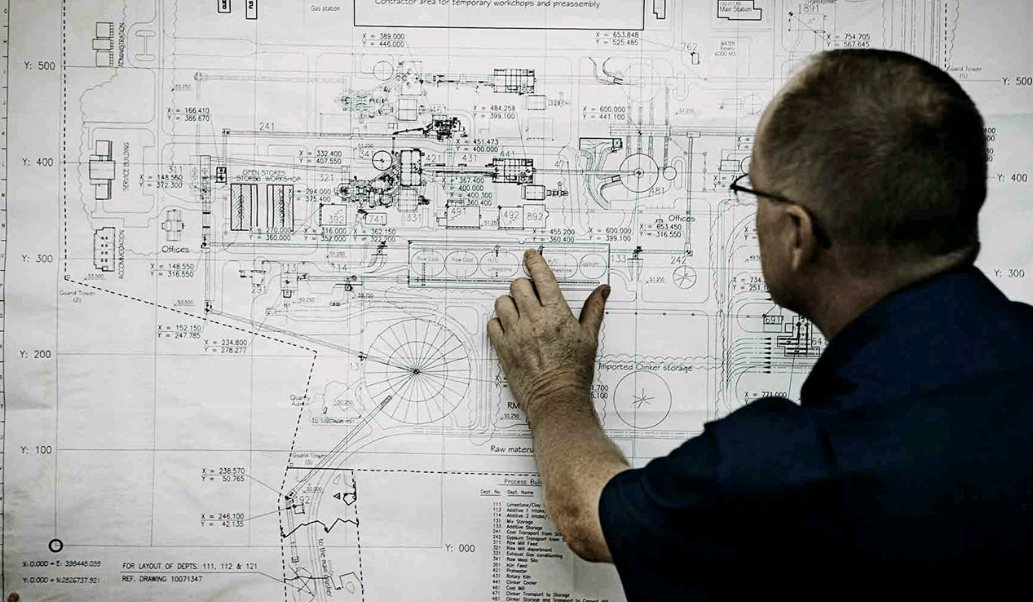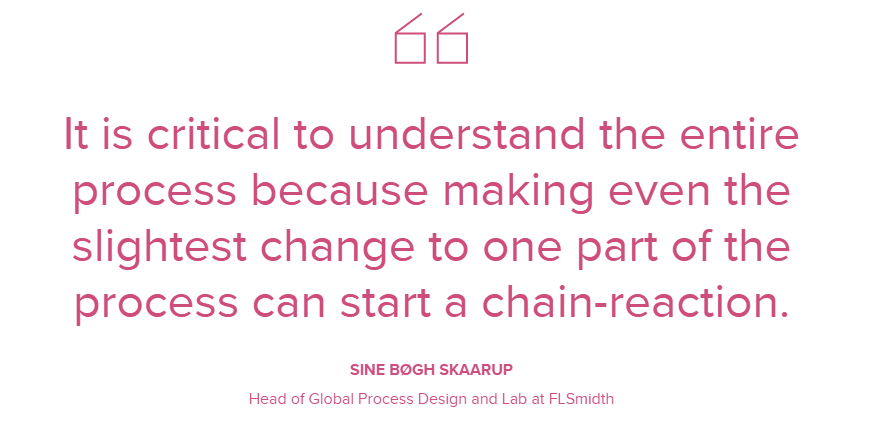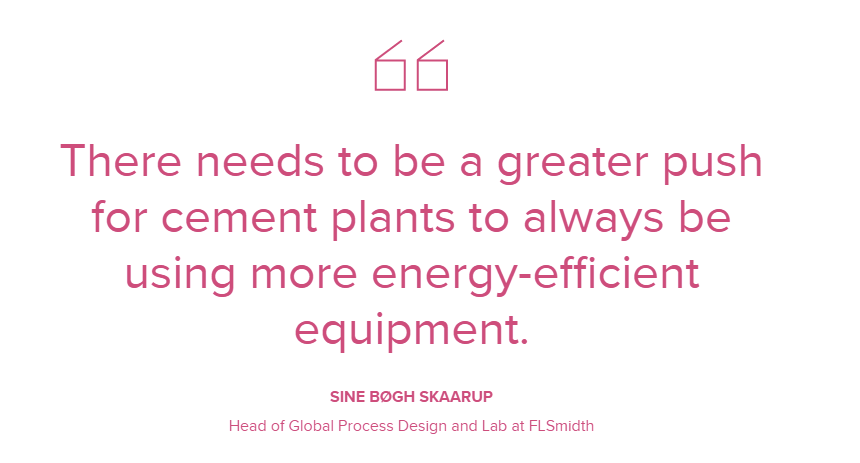The heat is on
In cement manufacturing, clinker production demands the most energy and emits the greatest amount of CO2 into the atmosphere. Clinker is produced at a sizzling 1,450 °C (2,640 °F), a crucial point for certain chemical reactions to occur.
With such a high energy intensity, it makes sense to focus optimisation around clinker production to lower overall energy consumption and reduce CO2 emissions. Of course, it is not the only place where improvements can be made. Decreasing the clinker to cement ratio by substituting clinker with other materials is just one proven way of doing so. This practice is aptly named clinker substitution.
Passing the strength test
Using clinker substitution to reduce CO2 emissions is increasingly being considered by many cement plant owners. Typical cement composition is 95% clinker, with gypsum making up the remaining amount. By substituting clinker with a comparable material, cement plant owners can achieve impressive environmental gains and align with global efforts to reduce CO2 emissions.
For a material to be deemed suitable for clinker substitution, its compressive strength, tensile strength and water absorption are must-have characteristics. With cement being used to construct buildings and bridges, its composition needs to be able to withstand, for example, the devastating effects of an earthquake.
Strict cement strength standards affect the decision to adopt the practice of clinker substitution. For instance, the European cement standard, EN196-1, outlines methods of testing cement to determine its strength. These standards, and others like it, may be viewed as roadblocks for considering clinker substitution. It isn’t as difficult as it seems, though, especially with a team of cement processing experts ready and willing to help.
Supplementary cementitious materials
Using supplementary cementitious materials (SCMs) is an effective way to reduce the clinker factor in cement production. It decreases cement production costs and reduces energy consumption without compromising cement quality.
In addition to reducing the clinker factor, SCMs contribute to the strength properties of cement through hydraulic or pozzolanic activity.
The complexity of the cement production process is nuanced and a lot needs to be done before embarking on small- and large-scale projects to lower process emissions. Laying down plans now will help prepare cement plants for a sustainable future as well as for the people they are serving. Emission standards are only going to become stricter as governments around the world work to mitigate the effects of industrialisation on the environment.
With sustainability high on the agenda, alternative fuels firing is fast becoming more common in cement plants. It complements clinker substitution as a solution to reduce emissions. Here are some facts about one type of alternative fuel: refuse derived fuel (RDF):



How to reduce moisture in shredded plastic waste for betterment of combustion in calciner.